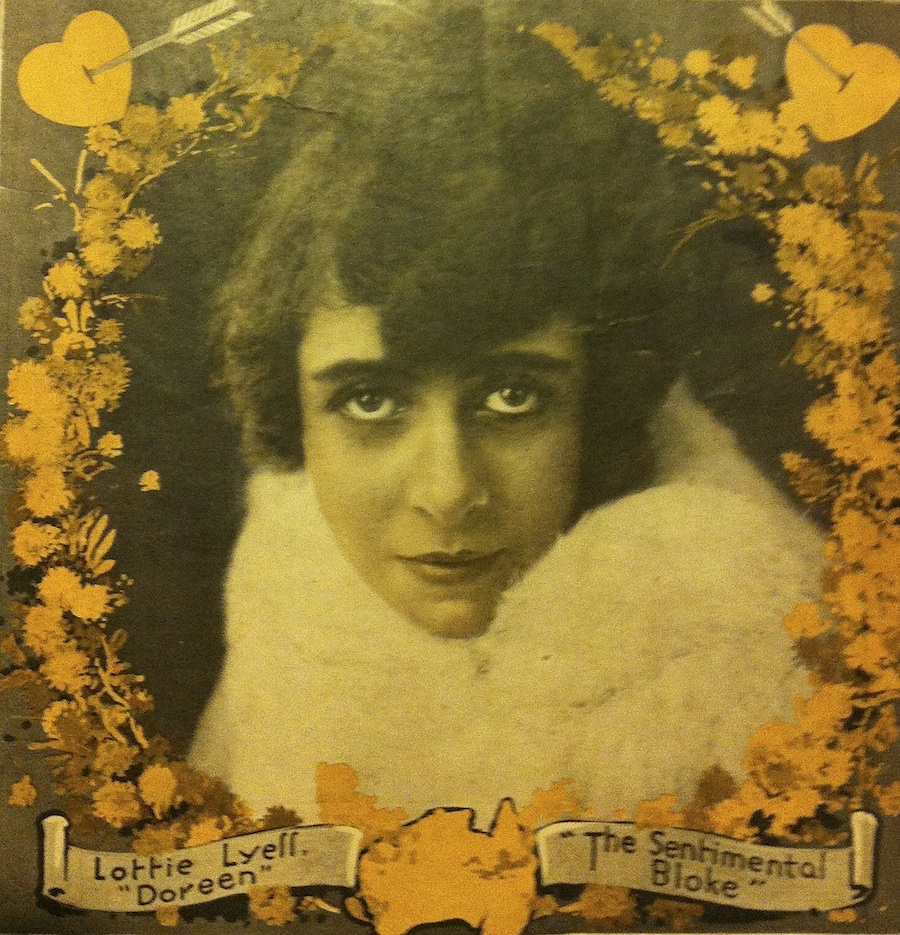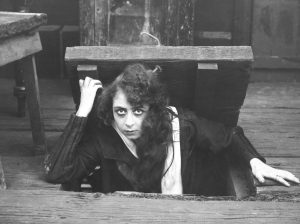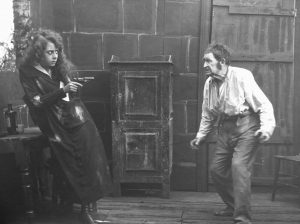Lottie Lyell was a much-loved silent film star in Australia. She was also a scenario writer, director, editor, producer, and art director. Quietly working alongside director Raymond Longford, she had a significant influence on the twenty-eight films they made together. Lyell starred in nearly all the films, but it is now generally accepted that she contributed a great deal more than was officially acknowledged at the time (Wright 1986, 1-14; Pike and Cooper 1998, 19, 109; Dooley 2000, 4).
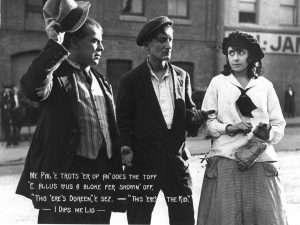
Lottie Lyell, The Sentimental Bloke (1919). Courtesy of the National Film and Sound Archive of Australia.
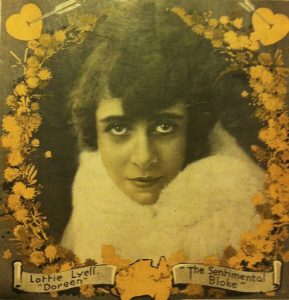
Lottie Lyell in The Picture Show promotion for The Sentimental Bloke (1919). Courtesy of the National Film and Sound Archive of Australia.
The Australian feature film renaissance of the 1970s awakened interest in the rich history of Australian cinema, and feminist scholars and archivists like Andrée Wright and Marilyn Dooley began to research the role of women in the early days of Australian cinema. In 1985, Wright produced a feature documentary called Don’t Call Me Girlie. Lottie Lyell featured in the section on the silent era and Wright included camera interviews with surviving actors and crew who testified to the major role Lyell had played both on and off screen. The following year, Wright published Brilliant Careers, devoting the first chapter to Lyell and calling it “The Sentimental Girl” (1-14). The title refers to Lyell and Longford’s most successful film, The Sentimental Bloke (1919). Based on the poem by C.J. Dennis, the film tells the story of a “knock about” bloke just out of jail who falls in love with a local lass. Lyell starred as the lovable Doreen, but she also holds screenplay, art direction, editing, and production assistant credits. The film screened to acclaim both nationally and internationally and is considered to be one of the greatest Australian films ever made. It is the only film Longford and Lyell made together that has been restored in its entirety. Some scenes from The Romantic Story of Margaret Catchpole (1911) and The Woman Suffers (1918) are held in the National Film and Sound Archive of Australia (NFSA) and clips can be viewed on YouTube. The restoration of The Sentimental Bloke was made possible because the original 35mm camera negative was discovered in 1973 at George Eastman House in New York (Case 2009, 67). It had been reedited and the intertitles had been changed to alter the Australian vernacular for the American market. By marrying the few existing print materials in Australia with the 35mm negative, the film was restored in its entirety. This included the original color tinting, which could be matched to the edges of the frame on the one surviving faded nitrate print reel that had not been exposed to the projector’s arc, and the traces of color found there were a significantly deeper hue (Case 71). This use of color is an area of interest for future researchers as some of the original scenarios, which Lyell had meticulously typed, show the careful use of different colored ribbons, as do surviving typed letters from their production company (Nash 2015, n.p.). Lyell often worked uncredited as the art director and the distinctive use of color in The Sentimental Bloke arguably shows her artistic influence. The Sentimental Bloke was lovingly restored by a team of archivists and scholars and completed in 2003. It was released by the NFSA in 2009 in a box set containing extensive written documentation and two DVDs, which include extras.
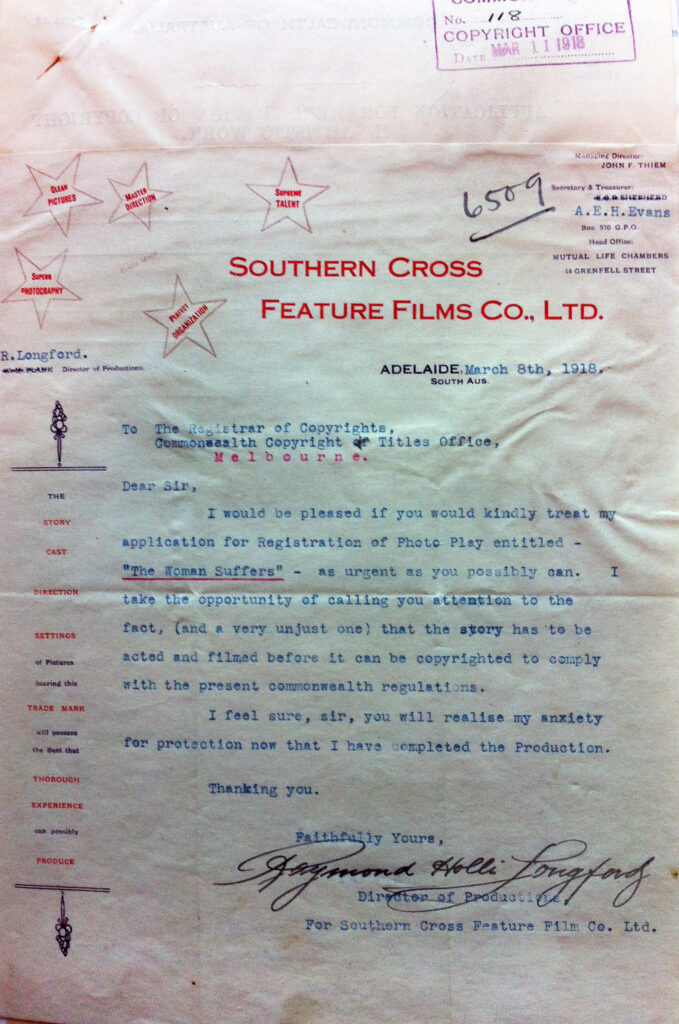
An example of a letter signed by Langford, that Lottie would have typed, from their production company Southern Cross Features. Private Collection.
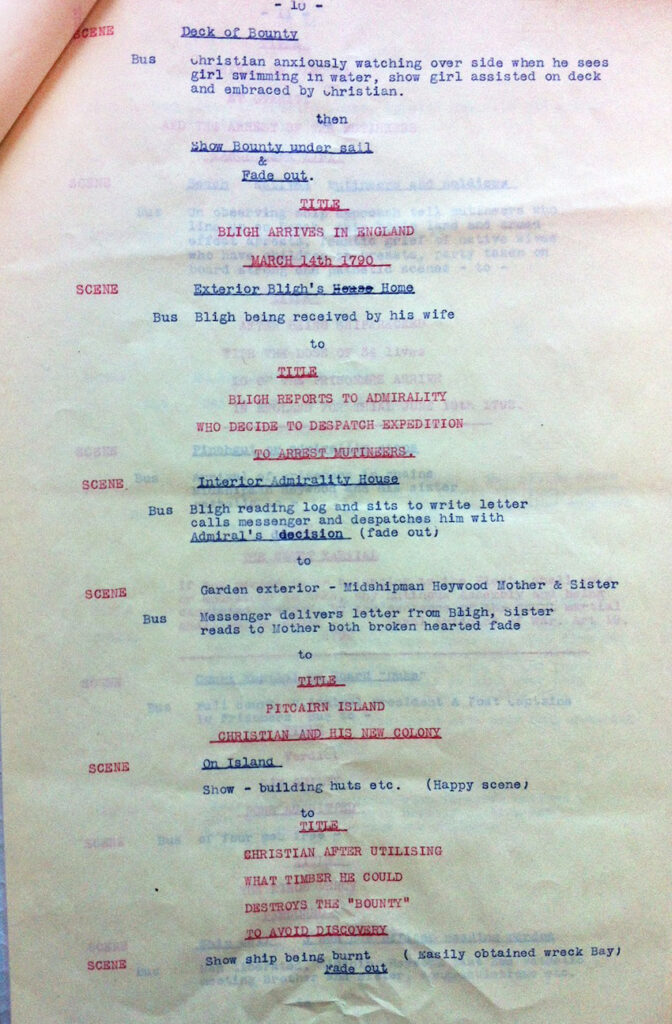
Page 10 of Mutiny of the Bounty scenario typed by Lyell showing the use of different colored ribbons. Private Collection.
Dooley, an archivist at NFSA, took a special interest in Lyell, working for years searching the archives for evidence of Lyell’s unacknowledged contribution to the films that she collaborated on with Longford. In 2000, she published a monograph called Photoplay Artiste: Miss Lottie Lyell, 1890-1925. This detailed her historical research plus some of Lyell’s scenarios (retyped) and accompanying stills, often from the lost films. The copyright requirements of the time meant the scenario plus high quality stills from each scene had to be submitted for copyright clearance and some of these are now held in the National Archives of Australia (NAA). My interest in Lyell comes from being both a screenwriter and a teacher. Examining the original scenarios opened up a new area of inquiry for me and I have published on Lyell’s often un-credited work as a scenario writer (2015, n.p.), as well as the work of other women scenario writers during the silent era in Australia (2015, 169-179). Of the twenty-eight films Longford and Lyell made together, Lyell holds scenario-writing credits on between thirteen and fourteen, just over half their combined output.
Born Charlotte Louise Cox, Lottie adopted “Lyell” as her stage name at the age of nineteen from the name of her neighbor’s house. In 1909, when she toured New Zealand in the play “An Englishman’s Home,” her parents put her into the care of fellow actor, Raymond Longford, a family friend, and a married man. Lyell shared Longford’s enthusiasm for the new medium of film and they soon formed a partnership, both on and off screen, that lasted right up until her untimely death from tuberculosis in 1925, at the age of thirty-five.
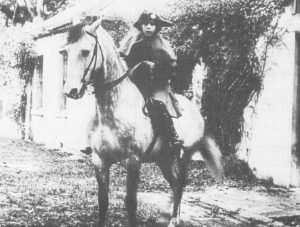
Lottie Lyell, The Romantic Story of Margaret Catchpole (1911). Courtesy of the National Film and Sound Archive of Australia.
Lyell did not fit easily into the image of a glamorous screen star. Instead she had a genuine quality and an understated performance style unusual for the time. She never played antagonistic characters, usually appearing as plucky, intelligent heroines facing danger, exploitation, or discrimination. She did all her own stunts and was an accomplished horsewoman. In 1911, Longford and Lyell made The Romantic Story of Margaret Catchpole. It was based on the true story of a woman convict transported to the penal colony of New South Wales for stealing a horse to help her lover escape. When Lyell stole the horse, disguised as a boy, and bravely rode it while pursued by the law, she rode into the hearts and minds of audiences looking for new kinds of heroines.
Years later, in a short typescript memoir now held at the NFSA, Longford wrote: “Lottie Lyell was my partner in all our film activities” (n.p.). Yet Longford’s name is on all the films as director up until Mutiny of the Bounty (1916), when Lyell received an assistant director credit as well as screenwriting and editing credits. The following year, Lyell starred in The Church and the Woman (1917) and then The Woman Suffers, but, curiously, is not credited as a writer on either. Both films are about young women unjustly accused of crimes, or treated poorly by men they have loved and trusted, so it is hard to imagine Lyell did not have a hand in both. In The Woman Suffers, Lyell’s unmarried character is seduced by a cad, becomes pregnant, and seeks an abortion. The Church and the Woman ran into copyright problems and the censor banned The Woman Suffers. Longford was probably trying to protect Lyell from litigation, but there is no documentation of this.
It was no secret in film circles that Longford and Lyell’s relationship was more than just a professional one. Longford’s Catholic wife refused to give him a divorce but when Lyell’s father died, Longford moved into the family home with her and her mother. Longford’s wife did finally agree to a divorce, but it did not come through until after Lyell’s death. Lyell left no personal papers, and apart from her signature on some letters, there is only one handwritten letter in existence. A great deal of documentation of their work, such as photographs, newspapers, playbills and posters, and letters, are held in the NFSA, although much of this focuses on Longford.
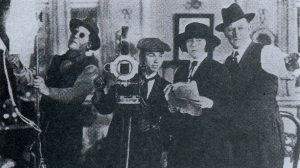
Lottie Lyell and Raymond Longford (right) with cinematographer Arthur Higgins and lighting assistant on the set of The Blue Mountains Mystery (1921). Courtesy of the National Film and Sound Archive of Australia.
In 1921, Longford and Lyell made The Blue Mountains Mystery together. It was adapted from the novel The Mount Marunga Mystery by Harrison Owen, and for the first time Lyell was formally credited as both co-director and sole scenario writer. In 1922, they registered The Longford-Lyell Australian Picture Productions Limited and began developing and making a slate of films, but the big Hollywood companies were increasingly dominating exhibition and distribution in Australia and it was becoming more and more difficult for local filmmakers to get their films made and seen. Lyell’s death in 1925 meant the end of a dynamic and creative partnership. Longford never again achieved the success of the early films, ending up a solitary figure working on the Sydney waterfront as a night watchman. Lyell and Longford are buried in the same grave. Her epitaph reads “Lottie Lyell Cox–Photo Play Artiste.” After industry consultation, in 2014, the Raymond Longford AFI (Australian Film Institute) and AACTA (Australian Academy of Cinema and Television Arts) Award for outstanding contribution to the enrichment of Australia’s screen environment and cultures was changed to the Longford Lyell Award.
See also: Caroline Frances Pugliese

